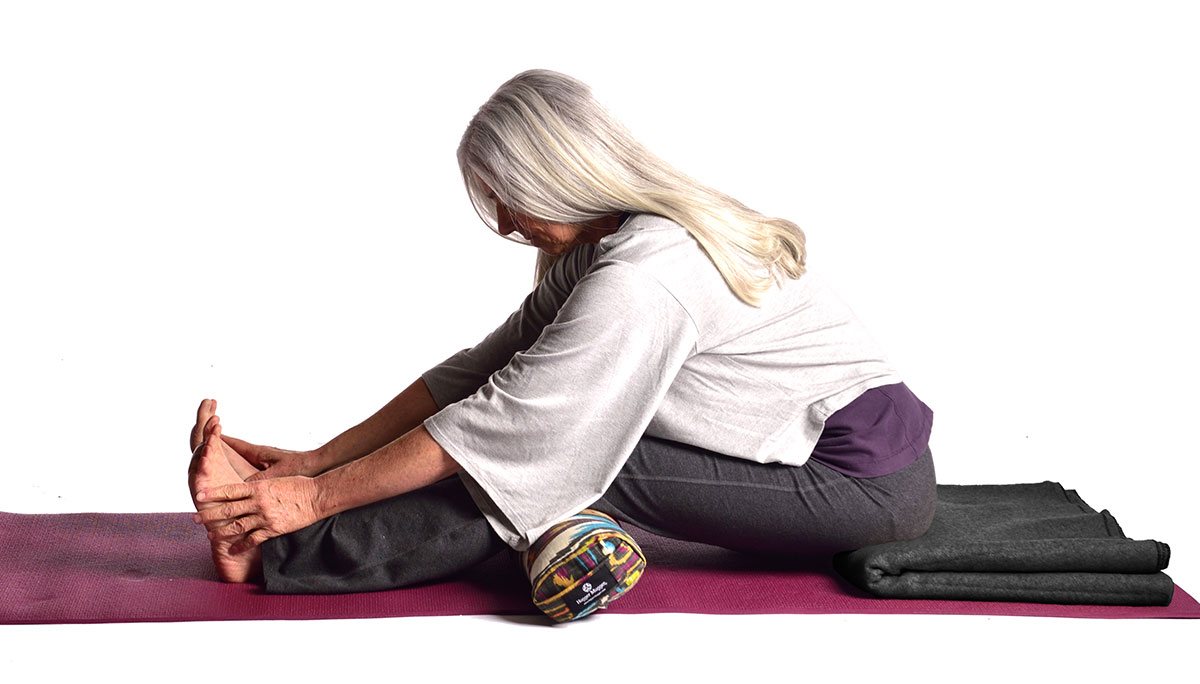
Forward bends are asana staples. In yoga practice, we bend forward while standing, sitting and even lying down. Actively lengthening the hamstrings and muscles of the hips helps counteract the effects of sitting in chairs. Forward bending is inherently calming, as long as we approach it with an attitude of ease and curiosity, rather than an attitude of forcefulness. Forward folds are not as easy as they look though. Tight hamstrings or hips can make them less than optimal it’s important that we practice not just any forward bends, but spine-healthy forward bends.
Keeping muscles of the hips and hamstrings supple can also be healthy for your back. Relaxed muscles in the hips and hamstrings help you maintain your spine’s natural “S” curves. Tight hamstrings can position the pelvis so that the tailbone is tucked under, a recipe for lumbar disc problems down the road.
It’s important that we maintain continuity between the pelvis and spine while we bend forward. As a general rule of thumb, the pelvis and spine should move together, both to foster continuity and protect the discs, but also to keep the sacroiliac joint in its most stable position.
In seated forward bends, sitting on a yoga blanket to encourage forward movement in the pelvis and bending your knees slightly can help keep your pelvis and spine moving together. A Pranayama Bolster is the perfect size to give support under your knees. Utilizing props is the best way to ensure that you practice spine-healthy forward bends.
How to Use Props for Spine-Healthy Forward Bends
Here’s how to utilize props to create a spine-healthy Paschimottanasana (Seated Forward Bend Pose).
- Sit with your legs outstretched, parallel on a yoga mat.
- Fold a yoga blanket so that it’s about three inches thick. Sit on the blanket so that your pelvis is on the edge and your legs are on the floor. If you feel your pelvis tilting back and your lumbar vertebrae poking out in back, fold another blanket for under your pelvis.
- Place a Pranayama Pillow under your knees. If you don’t have a Pranayama Pillow, you can roll up a blanket and place it under your knees.
- To move into the forward bend, tip the top of your pelvis forward and lengthen your front body. In other words, lead the forward bend with your pelvis. Keep your spine long as you come forward. It’s okay to gently flex your spine once your pelvis is tipped forward.
- Stay for 5-10 deep breaths, allowing your torso to oscillate to your breathing. Check your arms and shoulders. Are you tensing there? How about your facial muscles and throat? Relax where you can. On an inhalation, come up out of the forward bend.
